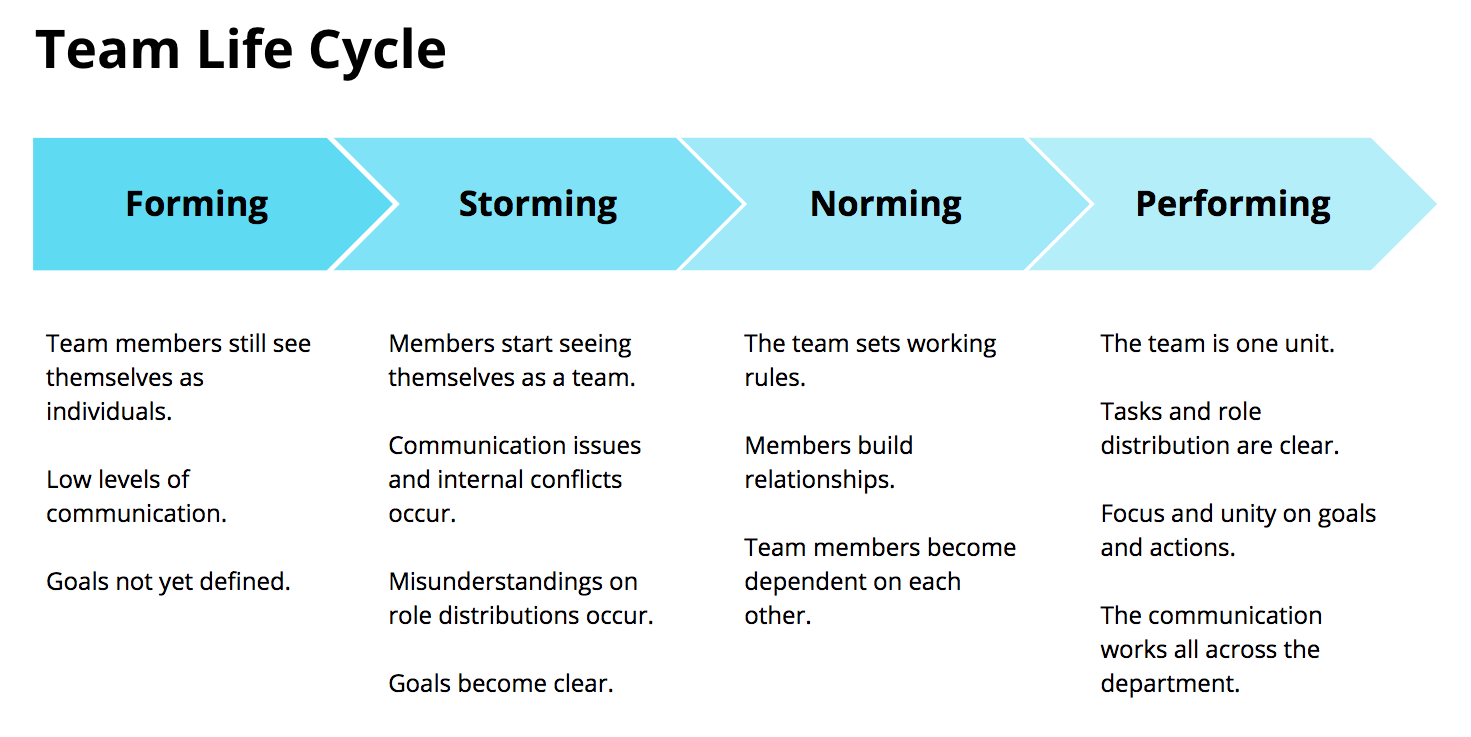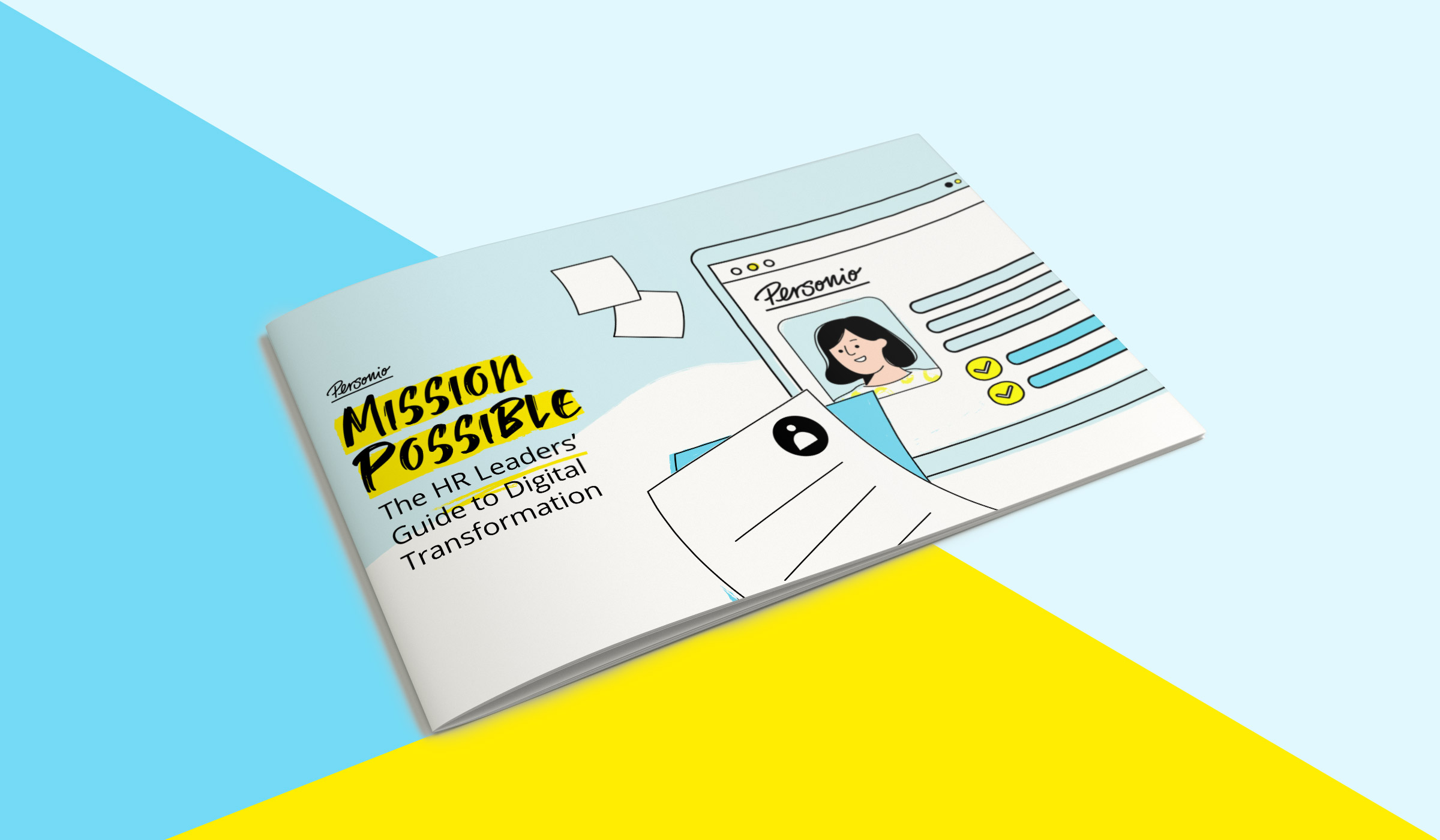Change management models add structure and success to change management and change management processes. That’s because they are lived, proven examples of putting change management into practice.
And, it’s never been more critical than right now! Over the last three years, organizations have gone through an average of five major changes. That figure makes one thing clear: your team needs real ways and means to make change stick.
Ready to get started? Download our free Change Management Guide right now.
Contents
What Is Change Management?
What Are Change Management Models?
Three Models & Change Management Examples
Change Management Model #1: Forming-Storming-Norming-Performing
Change Management Model #2: Maslow’s Needs Pyramid
Change Management Model #3: Four Sides of Communication
Successful Change Management Models to Spark Lasting Change
What Is Change Management?
Change management is the collective effort HR teams take to help employees understand, manage, overcome, and succeed through times of change. In order to best guide them through the change process, people teams need to recognize and implement an effective change management framework for success.
What Are Change Management Models?
Change management is a collective term, meaning that it makes up many approaches, tactics, and ways of helping organizations manage change. In order to better understand it, though, and to make it real, businesses need change management models (as part of a change management framework) to action change management properly.
Three Models & Change Management Examples
The following change management models, each partnered with a relevant example, address some of the ways that you can make change management successful within your organization.
So, without further ado, let’s dig into them:
Change Management Model #1: Forming-Storming-Norming-Performing
First, we’ll start with the team life cycle model, created by psychologist Bruce Tuchman in 1965. Essentially, the team life cycle works in the following way:
- Forming – Individual members begin to come together, but continue to perform work alone.
- Storming – Conflicts occur, but members begin to recognize themselves as a team.
- Norming – Rules are set to manage conflicts and relationships build.
- Performing – A true team forms as communications sets in across every individual.
Here’s a handy diagram to help illustrate this particular change management model…
Example: Two Departments are Being Combined
Undergoing a re-organization of your corporate structure (or even your HR department structure) is one of the most common, but one of the most stressful, change processes an organization can undertake. That because it disrupts and re-orients a whole new constellation of team members and teams, in general.
Let’s run with an example: Your company has recently decided to make a change, and now you are combining two departments. ‘Marketing’ and ‘communications’ are now just ‘Marketing Communications.’
A new org chart has been crafted, employees are familiar with one another, but to this point have mainly worked in different offices and only have visibility to one another’s projects very sporadically. How can you, as an HR professional and leader, help with this change?
The team life cycle model is a great start. This is true not only to recognize the steps that are likely to occur within your new team but where you can interject team development initiatives to help the process.
In cooperation with management, you can speak with executives and define together where you see challenges in teamwork and the urgency of various projects. Then, have your new team come together and work on one of those projects, in a protected environment, and come together as a team through the lifecycle of a single project.
Change Management Model #2: Maslow’s Needs Pyramid
Maslow’s hierarchy of needs model comprises five classical levels that motivate humans:
- Physiological needs
- Safety needs
- Social needs
- Individual needs
- Self-actualization
These are each expandable and should always be seen within context (culture, socialization, etc.). They are relevant for change projects because safety, for example, is a central aspect that you need to consider when dealing with employees.
Example: A Department is Moving to a New Location
A department in your organization is relocating to a different office, e.g. from an attractive city location out to a town in the country, maybe 100 kilometers away.
A change like this will shake up your employees at first because it impacts their private life. They will wonder how to deal with this. Commute? Flexible working? Quit? They may have very negative feelings, feel unsure, and will ask some of the big questions first: What will my family say? What if I lose my job?
There’s a lot of different needs going on here, which is why Maslow’s model can help address each in quick succession. As an HR professional, speak with your employees and try to ask a question that corresponds to each unique need:
- Physiological: Are you concerned that this will change your living situation?
- Safety: Are you concerned this change may impact your job security?
- Social: Is a change of scenery going to reduce or impact your social life negatively?
- Individual: How do you feel this change impacts your individual freedom?
- Self–actualization: Do you think you can make the most of this change?
Here, extended needs, such as autonomy and employee recognition, also play a significant role. Employees should know and feel that they are needed at all times.
While it might still be too early to suggest concrete solutions, the idea of Maslow’s change management model is to gain an idea of where your employees stand. Understand them, empathize with them, and let them know you will be there to help.
 Free Resource: Guide to Change Management
Free Resource: Guide to Change Management
People are only prepared to change if they understand the ‘why’ behind it. Download our change management guidelines today to start the process.
Change Management Model #3: Four Sides of Communication
The four sides model, developed by Friedemann Schulz von Thun, is comprised of four sides:
- Fact
- Self-revealing
- Relationship
- Appeal
Effectively, it is the recognition that every message has these four sides. So, when it comes to change processes, the messages you use to communicate with employees matter because they can be broken down into these four facets.
As such, each ‘side’ carries out the same message in different ways.
The fact side is exactly that: a statement of fact. Whether a data point or a self-evident truth, the fact side is a statement that most people recognize or simply understand to be true.
The self-revealing side is, whether the messenger is a person or an organization, a ‘reveal’ of personal information that reveals motives, values, emotions, or anything like that. Think of it as the processing or logic stage.
The relationship side is then the side that establishes a connection with the person receiving the message. It is an admission of what the sender of the messenger thinks of that person.
Finally, the appeal side is the ‘ask.’ It is what the sender wants to get out of the receiver, and can be an instruction, a demand, advice, insight, or anything like that.
Example: Your Sales Department is Changing Their Compensation Model
There are tough times ahead. Your company’s competition has identified and sales are taking a hit. Therefore, management has decided it’s necessary to change up the incentive model. New orders will be rewarded more, while base salaries will be reduced. Now, you need to communicate that message.
If we take the four sides into account, we can start to craft a message that works. Here’s how we might go about it:
- Fact – Sales numbers are declining and here is how (transparency is crucial here).
- Self–revealing – This has put the business in a tough spot as they do not want to lose employees.
- Relationship – It matters that every employee has a job, succeeds, and helps the company succeed as one.
- Appeal – Base salaries need to be lowered in order to reward sales success. Let’s get out there and close!
Each of these sides builds to the core message: Base salaries are being reduced, but it is being done in order to help the company, and every employee, succeed because every employee matters.
Ultimately, every message during a time of change should be conscious of these four sides. They can help create a holistic, meaningful message, that doesn’t put employees on edge (rather, it helps them see themselves as playing their part in potentially positive change).
Successful Change Management Models to Spark Lasting Change
Hopefully, these change management examples helped you learn a bit more about how you can make change easier within your organization. Overall, it truly helps to have a change management framework in place, so that you have an impeccably clear sense of how you can (and want to) tackle change in your company.
As you advise your management team through the process, please feel free to refer to these change management models. In doing so, you’ll be emphasizing a scientifically backed approach to change.
After all, poor communication, especially with crucial stakeholders, and a lack of analytics and reporting are the most common points of criticism cited by employees when discussing change implementation.
If you can act with tact and finesse, you have already completed a large part of it.
Our Change
Management Guidelines







